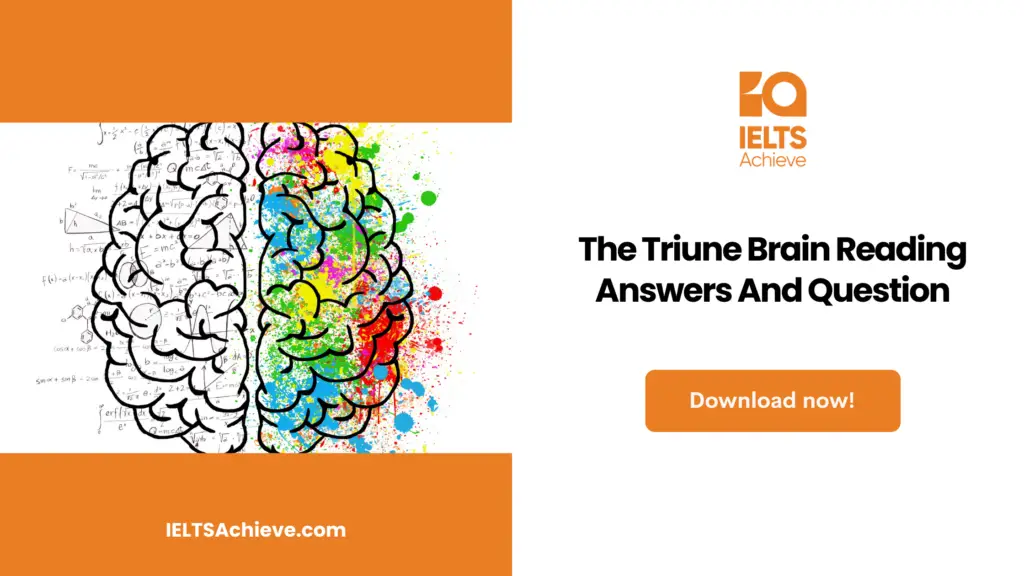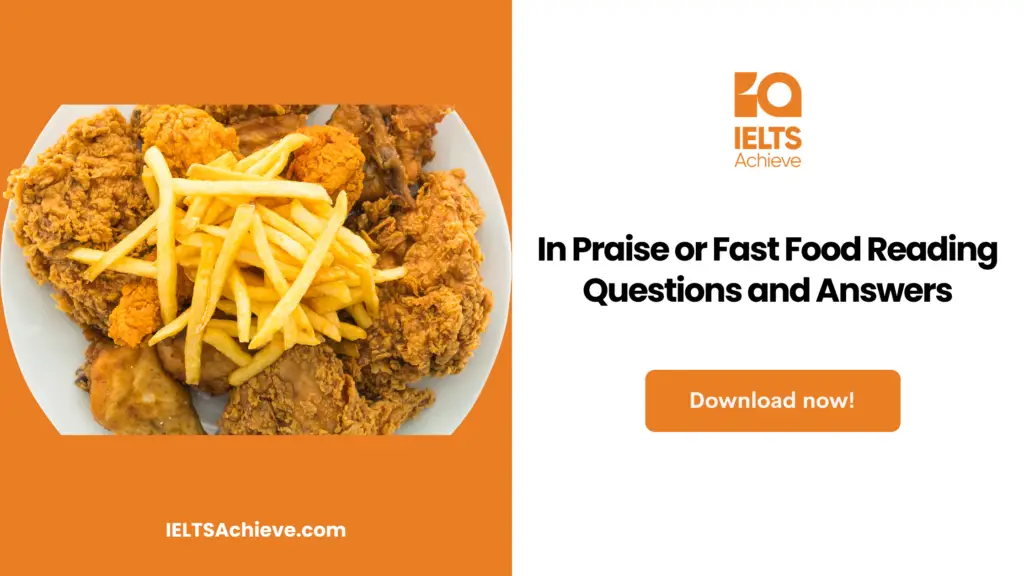The Blog post contains the following IELTS Reading Questions:
- IELTS Reading Flowchart Completion
- IELTS Reading Yes/No/Not Given
- IELTS Reading Matching Headings
Stay informed and prepared for success – Explore our comprehensive Reading Test Info page to get valuable insights, exam format details, and expert tips for mastering the IELTS Reading section.
IELTS Reading passage – Chocolate –The Food of the Gods

Chocolate –The Food of the Gods
A The story of chocolate begins with the discovery of America in 1492. Columbus was the first European to come into contact with cacao. On August 5th, 1502, on his fourth and last voyage to the Americas, Columbus and his crew met some natives in a canoe that contained beans from the cacao tree. Columbus was struck by how much value the Indians placed on them as he did not know the beans were used for currency. It is unlikely that Columbus brought any of these beans back to Spain and it was not until about twenty years later that Cortez grasped the commercial possibilities when he found the Aztecs using the beans to make the royal drink “chocolate”.
B The Spanish, in general, were not fond of the bitter drink so Cortez and his followers made it more palatable by adding cane sugar and later cinnamon and vanilla were added. Spanish monks let the secret out back home and, although the Spanish hid it from their neighbours for a hundred years, finally chocolate’s popularity grew until it was the fashionable drink at the French court and the discerning choice of customers at London meeting houses.
C The cacao beans are harvested from pods grown on the cacao tree. The pods come in a range of types since cacao trees cross-pollinate freely. These types can be reduced to three classifications. The most common is Forastero, which accounts for nearly 90% of the world’s production of cacao beans. This is the easiest to cultivate and has a thick-walled pod and a pungent aroma. Rarest and most prized are the beans of the Criollo. These beans from the soft, thin-skinned pod have an aroma and delicacy that make them sought after by the world’s best
chocolate makers. Finally, there is the Trinitario, which is believed to be a natural cross from strains of the other two types. It has a great variety of characteristics but generally possesses a good, aromatic flavour and the trees are particularly suitable for cultivation.
D The cacao tree is strictly a tropical plant thriving only in hot, rainy climates. Thus, its cultivation is confined to countries not more than 20 degrees north or south of the equator. The cacao tree is very delicate and sensitive. It needs protection from the wind and requires a fair amount of shade under most conditions. This is true, especially in its first two or three years of growth. A newly planted cacao seedling is often sheltered by a different type of tree. It is normal to plant food crops for shade such as bananas, plantain, coconuts or cocoyam’s. Rubber trees and forest trees are also used for shade. Once established, however, cacao trees can grow in full sunlight, provided there are fertile soil conditions and intensive husbandry. With pruning and careful cultivation, the trees of most strains will begin bearing fruit in the fifth year. With extreme care, some strains can be induced to yield good crops in the third and fourth years.
E The process of turning cacao into chocolate hasn’t changed much since the Swiss made the major breakthroughs in the process in the late 1800s. First, the beans (up to twelve varieties harvested from all over the world) go through a process of fermentation and drying. They are then sorted by hand before cleaning and then roasting. Winnowing follows which removes the hard outer hulls and leaves what is known as the “nibs”. A crushing and heating process known as Hunter’sProcess is then used to remove nearly half of the cocoa butter from the nibs. This makes unsweetened chocolate (also known as cooking chocolate). Basic eating chocolate is made from a blending of the unsweetened chocolate with some of the cocoa butter along with other ingredients such as sugar and vanilla. The resulting product is then “conched” and this conching gives chocolate the velvet texture that we know so well. The finished result is then moulded, cooled, packaged by machine, distributed, sold and, of course, eaten!
F Where methods of manufacturing are concerned, manufacturers have a completely free hand and have developed individual variations from the pattern. Each manufacturer seeks to protect his own methods by conducting certain operations under an atmosphere of security. No chef guards his favourite recipes more zealously than the chocolate manufacturer guards his formulas for blending the beans. Time intervals, temperatures and proportions are three critical factors that no company wants to divulge.
G Apart from the taste, one of the most pleasant effects of eating chocolate is the “good feeling” that many people experience after indulging. Chocolate contains more than three known chemicals including caffeine, theobromine and phenlethylamine which are stimulants. Some researchers believe that chocolate contains pharmacologically active substances that have the same effect on the brain as marijuana and that these chemicals may be responsible for problems such as the psychoses associated with chocolate craving. However, eating too much of anything can obviously cause health problems and as long as moderation is exercised, chocolate should not cause the average person any harm.
Unlock your full potential in the IELTS Reading section – Visit our IELTS Reading Practice Question Answer page now!
Recommended Questions:
Renewable Energy IELTS Reading Question with Answer
Questions 28 – 33
The reading passage on The Story of Chocolate has 7 paragraphs A –G. From the list of headings below choose the most suitable headings for paragraphs B –G. Write the appropriate number (i –xi) in boxes 28 –33 on your answer sheet. There are more headings than paragraphs, so you will not use them all.
List of Headings
- i) Growing The Tree
- ii) Problems With Manufacture
iii) Why We Like It
- iv) How the Aztecs Discovered Chocolate.
- v) Chocolate Spreads to Europe
- vi) First Contact
vii) The Countries that Grow Cacao Trees
viii) Secrecy Issues
- ix) Recipes for Using Chocolate
- x) Varieties of Cacao
- xi) From Bean to Bar
Example Answer
Paragraph A iv
28Paragraph B
29Paragraph C
30Paragraph D
31Paragraph E
32Paragraph F
33Paragraph G
Ready to conquer Matching Headings questions? Click here to learn essential tips and techniques for matching headings accurately to paragraphs or sections in the IELTS Reading section.
Questions 34 –37
Do the following statements agree with the information given in The Story of Chocolate?In boxes 34 –37 on your answer sheet write:
YES if the statement agrees with the information
NO if the statement contradicts the statement
NOT GIVEN if there is no information on this in the passage
34 Most early Spaniards did not particularly like the chocolate that the Aztecs originally drank.
35 The Forastero bean is generally regarded as making the best chocolate.
36 Cacao trees need a lot of looking after to be used commercially.
37 Some chocolate companies have been known to steal chocolate recipes from other companies.
Want to excel in identifying the writer’s views and claims? Click here to explore our in-depth guide on how to accurately determine Yes, No, or Not Given in the IELTS Reading section.
Questions 38 –40
Using the information in the passage, complete the flow chart below. Write your answers in boxes 38 –40 on your answer sheet. Use NO MORE THAN THREE WORDS from the passage for each answer.
The Chocolate Production Process
The beans are (eg) __________ at the farm and are then fermented, dried, sorted and cleaned. Answer – harvested
The beans are winnowed after 38__________ and these two processes produce the nibs.
Some of the 39__________ is then extracted using Hunte’s Process to make cooking chocolate.
The cooking chocolate is then blended with other ingredients to make the various types of eating chocolate available today.
40__________produces the smoothness in the chocolate.The chocolate is re-heated to melt it, put into moulds and then cooled to make its final shapes. The finished product is wrapped automatically, sent to the shops and then sold. Finally, the customer eats his or her bar of chocolate.
Boost your performance in Summary, Notes, Table, and Flowchart Completion tasks. Click here to explore our detailed guide and learn how to effectively complete summaries, notes, tables, and flowcharts in the IELTS Reading section.
Unlock your full potential in the IELTS Reading section – Visit our IELTS Reading Practice Question Answer page now!
Recommended Questions:
Renewable Energy IELTS Reading Question with Answer
Answers
28Answer: v
29Answer: x
30Answer: i
31Answer: xi
32Answer: viii
33Answer: iii
34Answer: Yes
35Answer: No
36Answer: Yes
37Answer: Not given
38Answer: Roasting
39Answer: Cocoa butter
40Answer: Conching

We hope you found this post useful in helping you to study for the IELTS Test. If you have any questions please let us know in the comments below or on the Facebook page.
The best way to keep up to date with posts like this is to like us on Facebook, then follow us on Instagram and Pinterest. If you need help preparing for the IELTS Test, join the IELTS Achieve Academy and see how we can assist you to achieve your desired band score. We offer an essay correction service, mock exams and online courses.


